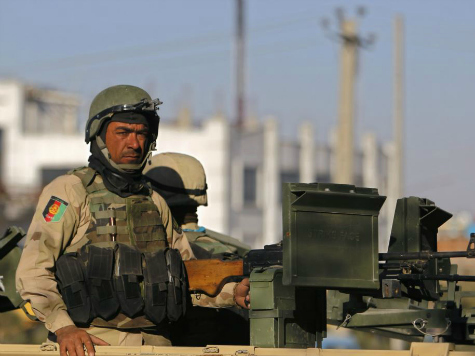The U.S. State Department spent $6.5 million in taxpayer funds to build communication towers that could still be standing idle in Afghanistan and may never be used as originally intended, the U.S. government watchdog for reconstruction in the war-torn country found.
“I am concerned that the officials responsible for planning and executing this project did not take into consideration a number of apparent red flags which were evident prior to the decision to commit over $6.5 million in U.S. taxpayer funds,” wrote the office of the Special Inspector General for Afghanistan Reconstruction (SIGAR) John Sopko in a September 9 letter addressed to Secretary of State John Kerry.
Sopko noted that, in May, a U.S. military helicopter crashed into a cell phone tower in the southern Afghan province of Kandahar, injuring three Americans and killing one NATO coalition service member. The nationality of the NATO soldier was not released, according to the NBC News.
In the letter, Sopko asks what the State Department is doing to mark the unused towers for traffic safety.
The U.S. Department of State, which oversaw the building of the towers, ignored “concerns expressed by senior State Department personnel, Department of Defense (DOD) flag officers, and Afghan officials regarding the viability of the project,” continued Sopko.
“Specifically, concerns were raised that Afghan telecom providers would not connect to the system, and that DOD did not want the towers because of the high cost of fueling the towers’ generators,” he added. “Despite these concerns, the State Department moved forward with construction.”
According to the State Department, the towers were built “to expand and enhance media provider coverage and telecommunication services to the civilian Afghan population in underserved and strategically important… provinces via television, radio, and telephonic mediums.”
In the same vein, the department told SIGAR that the project as one of its “highest Strategic Communications priorities.”
The State Department, in a March 21 letter to SIGAR, wrote that it considered other uses once it became clear that the towers could not serve their intended purpose, but it had ultimately “determined that there was no available foreign assistance or other State Department use for the towers.”
Six towers were constructed at a cost of $6.5 million. The inspector general came to learn that an additional tower, which had already been built at the U.S. Kandahar Air Field, was brought under the wing of the State Department project to expand media and telecommunication access.
That seventh tower was transferred to DOD at a cost of $150,000 and it remains uncertain whether it was ever utilized. One of the other six towers was also turned over to DOD to be used for telephone coverage to no avail as of March.
The State Department has tried to auction some of the other towers, but the results of that effort are unclear.
It considered having the Afghan government take over the towers. However, in the March 21 letter to Sopko, the State Department explained that the Afghan government’s lack of “resources and technical capacity to operate and maintain these towers” led to the rejection of that option “for the safety and welfare of the public, as well as other reasons.”
Most of the towers were built in two southern Afghan provinces (four in Helmand and one in Kandahar) that have been a hotbed for clashes between the U.S.-led coalition and Taliban insurgents throughout the war.
About $104 billion in American taxpayer funds has been committed to nation-building efforts, an unprecedented amount of money spent on a foreign country by history’s account.
On September 12, SIGAR said Americans are expected to be on the hook for “$5 billion to $8 billion annually for years to come.”
Sopko highlighted that “when we build things the Afghans can’t use, and when we don’t take their resources into account, we’re not just wasting money; we’re jeopardizing our mission of creating a self-sustaining Afghanistan that can keep insurgents down and terrorists out.”
Over 2,000 U.S. soldiers have lost their lives in the ongoing Afghanistan conflict, which began nearly 13 years ago on Oct. 7, 2001.
Nevertheless, as SIGAR pointed out on September 12 “the country remains under assault by insurgents and is short of domestic revenue, plagued by corruption, afflicted by criminal elements involved in opium and smuggling, and struggling to execute basic functions of government.”

COMMENTS
Please let us know if you're having issues with commenting.